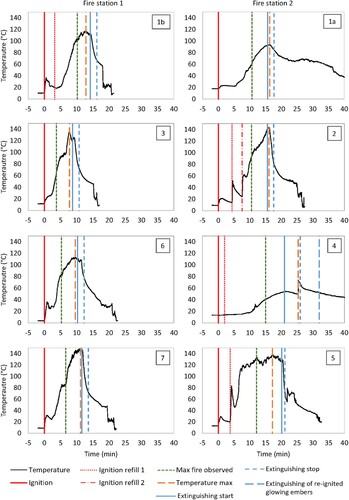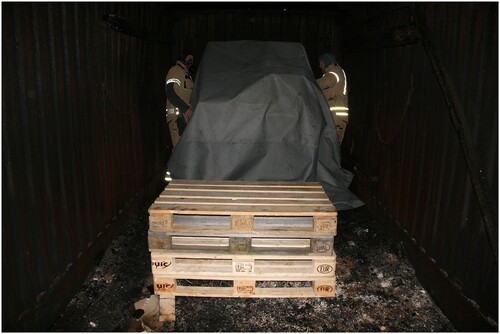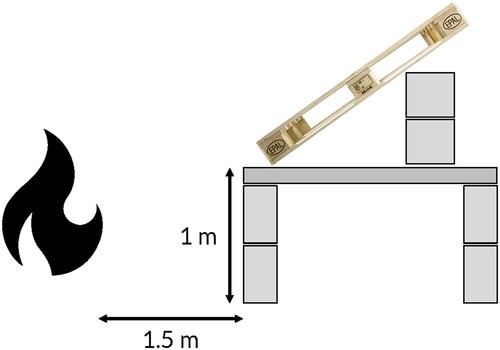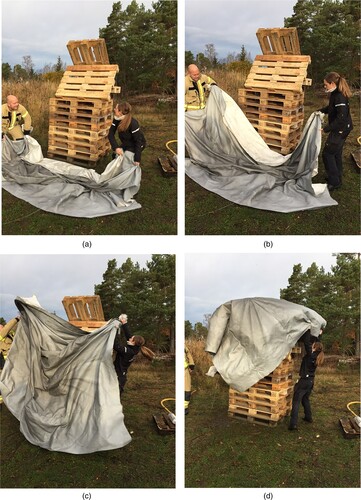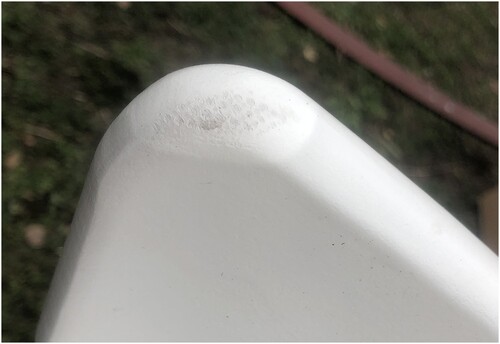Figures & data
Table 1. Experimental procedure.
Table 2. Properties of the tested materials.
Table 3. Preliminary results, overview.
Figure 1. Experimental set-up for the fire service, showing wooden pallet and cardboard boxes stacked on a table, along with a painted wooden chair holding the thermocouple arrangement.
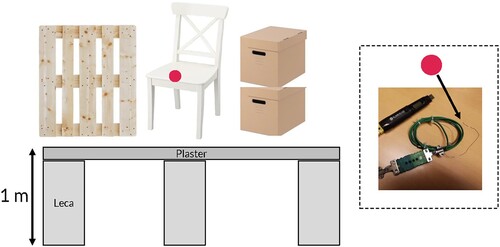
Figure 3. Set-up before covering the items and before igniting the fire using the wooden pallets stacked in front.
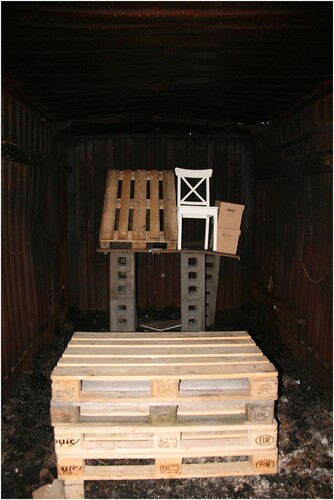
Figure 6. Example of damage after the fire test: soot on painted wooden chair. Minimal covering with gaps on the side allowed soot to get inside.
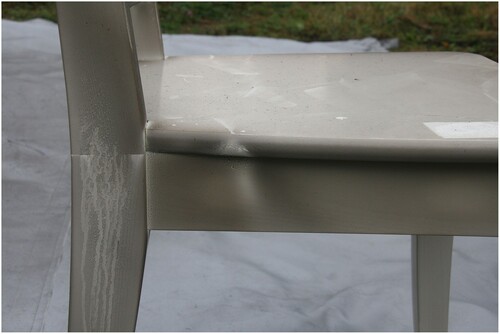
Figure 7. Example of damage after the water test: water damage on painted wooden chair. Minimal covering with gaps on the side allowed humidity to get inside and react, causing the material to swell.
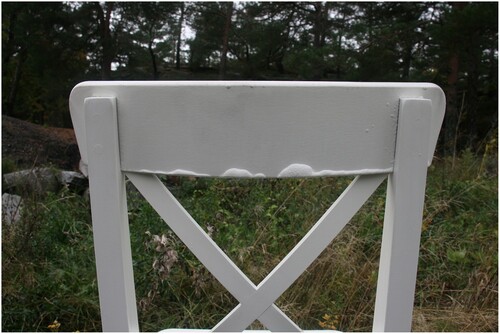
Figure 8. Another example of damages caused by water on the cardboard box. The seams on some of the covers resulted in wet cardboard boxes underneath the cover.
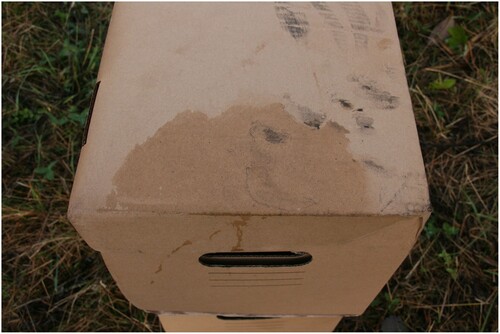
Figure 9. Temperature development during the experiments. For product 1a, there is an apparent discrepancy in the temperature measurement compared with its performance (destroyed). This is most likely due to differences in radiant and conductive heat transfer modes (see main text).
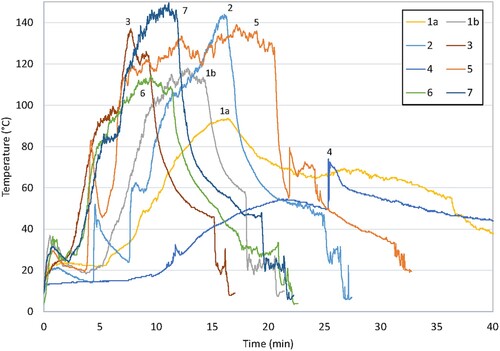
Figure 10. Temperature development during the experiments, with key events during the experiment indicated by vertical lines. Left column are tests performed at fire station 1 (materials 1b, 3, 6, and 7); right column at fire station 2 (materials 1a, 2, 4, and 5). Fire station 3 performed pre-tests, and manageability tests with no temperature recording, and are thus not included in this overview.
